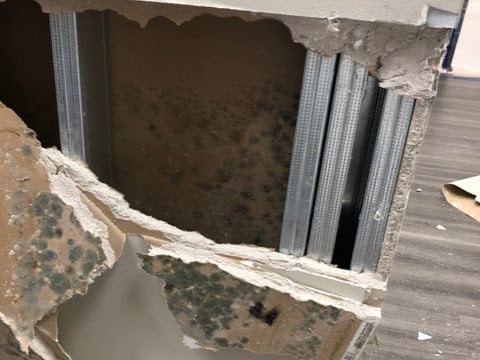The saliva, feces, and shedding body parts of cockroaches can trigger asthma and allergies in sensitive individuals. Cat allergens originate from the cat’s saliva and sweat glands, get dispersed into the room, and settle in dust deposits when the cat sheds its hair. A mouse’s skin sheddings, urine, and saliva are significant sources of rodent…
Category: Uncategorized
Hidden mold on sheetrock inside a wall cavity can cause allergy-like symptoms in sensitive individuals if mold spores become airborne and are inhaled. Mold spores can also trigger an asthma attack in asthmatics. Airborne mold sampling for laboratory analysis in the presence of hidden mold growth can often reveal the existence of hidden mold growth…
EPA Carbon Monoxide Standards The Environmental Protection Agency (EPA) sets National Ambient Air Quality Standards (NAAQS) for carbon monoxide as part of its mandate to protect public health and the environment. Carbon monoxide is a colorless, odorless gas that can be harmful when inhaled because it interferes with the blood’s ability to carry oxygen. Standards…
Air duct cleaning is essential. Make sure the inside of your ductwork is clean. Many homeowners replace the air handlers but leave the ductwork in place. Over time, dust, dirt, and mold accumulate in the ducts. These contaminants become entrained in the airflow and are distributed into the room air when the unit is on.…
The sick building syndrome (SBS) is used to describe a situation in which the occupants of a building experience acute health- or comfort-related effects that seem to be linked directly to the time spent in the building. No specific illness or cause can be identified. The complainants may be localized in a particular room or…






